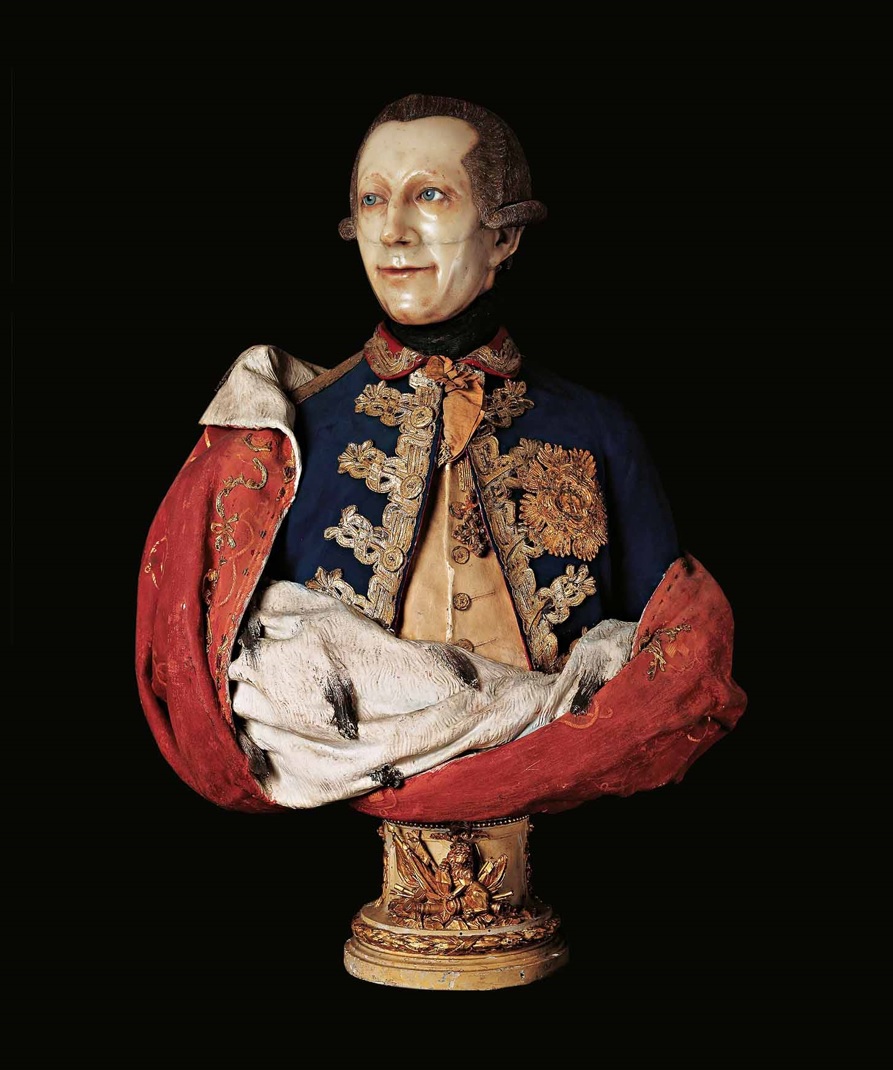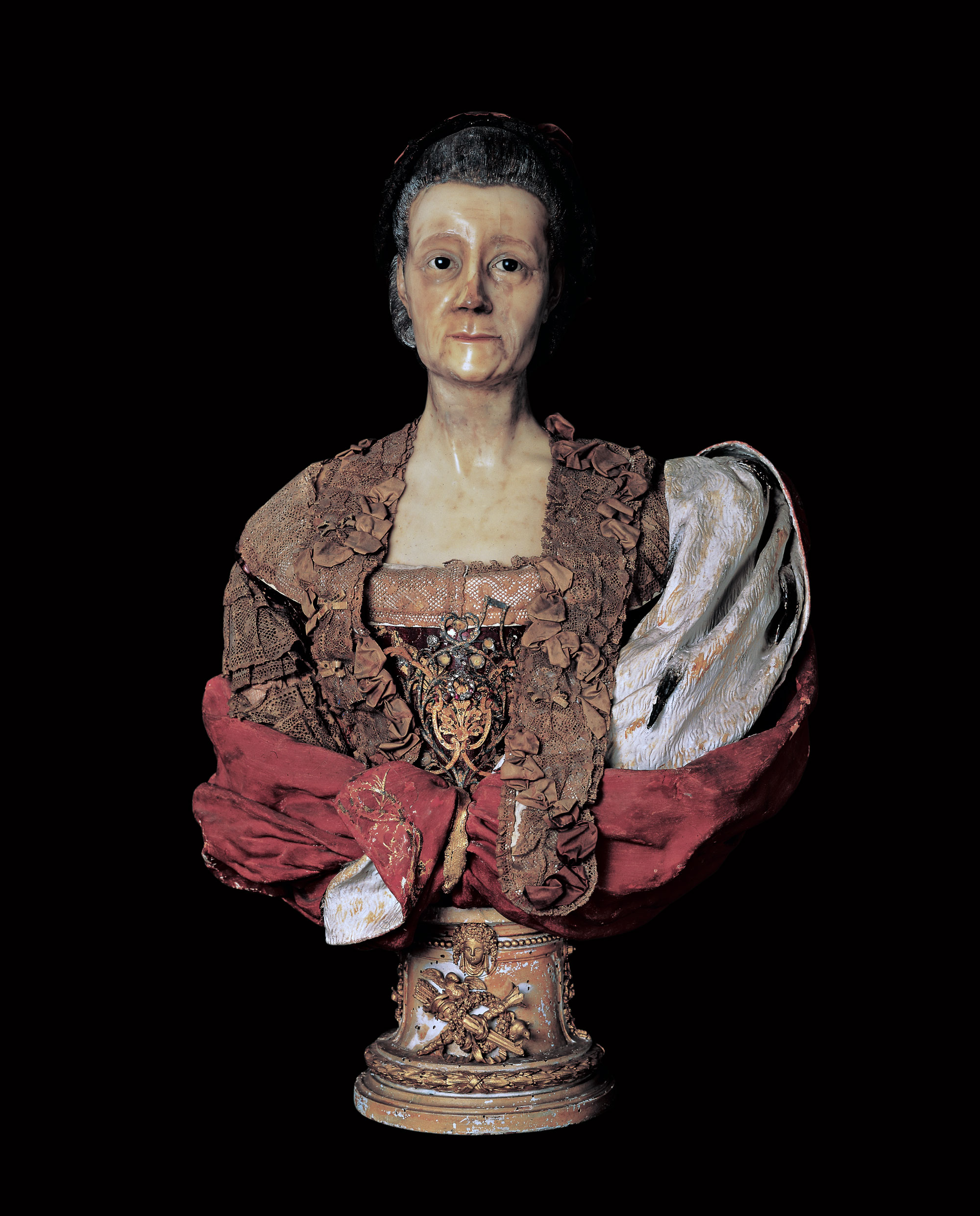Portrait of Vittorio Amedeo III of Savoy and Maria Antonia Ferdinanda of Bourbon
Francesco Orso (? - 1799)
18th century, Polychrome wax, papier-mâché, fabric Carved, painted, and gilded wooden base attributed to Giuseppe Maria Bonzanigo
These two wax and polychrome papier-mâché portraits were produced by the Piedmontese artist Francesco Orso, who signed them on their bases. Orso was associated with the Turin Academy of Art beginning in 1780 and he had probably executed the two busts by 1785, the date of his move to Paris, where he would become famous, continuing to work until the late 18th century. In the French capital, Francesco Orso changed his name to Orsy and opened an atelier, the Salon de Cire, in the Palais-Royal after exhibiting several wax works at the Salon de la Correspondance. His Salon was a great success and appeared to be the only serious competitor to Curtius' more famous Salon, also at the Palais-Royal, where the future Madame Tussaud was just beginning to work. Orsy was arrested for sculpting and exhibiting the bust of Charlotte Corday, the assassin of Marat, and saved himself by lying: he declared that the bust depicted Liberty, and was therefore in line with the rhetoric of the Revolution. He was thus saved from the guillotine, which had claimed the lives of two other Parisians who had displayed the effigy of the murderer, and died of natural causes in 1799. Vittorio Amedeo III, who married Maria Antonia of Bourbon in 1750, assumed the title of King of Sardinia in 1773. In these two busts, the sovereigns are portrayed in civilian clothing, so the sculptures must have been intended for private use. Only the ermine of the mantles denotes the couple’s royalty. These two busts must date to Orso's final years in Piedmont.



